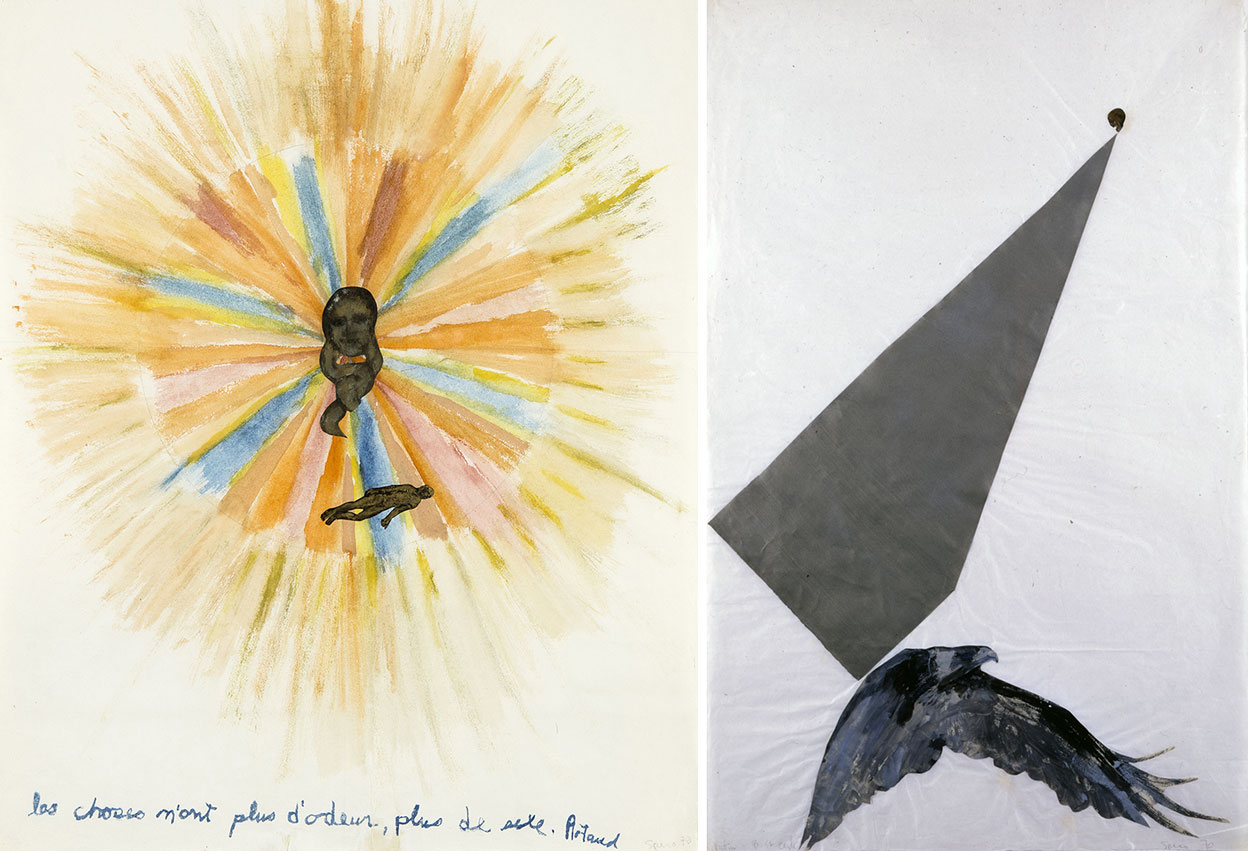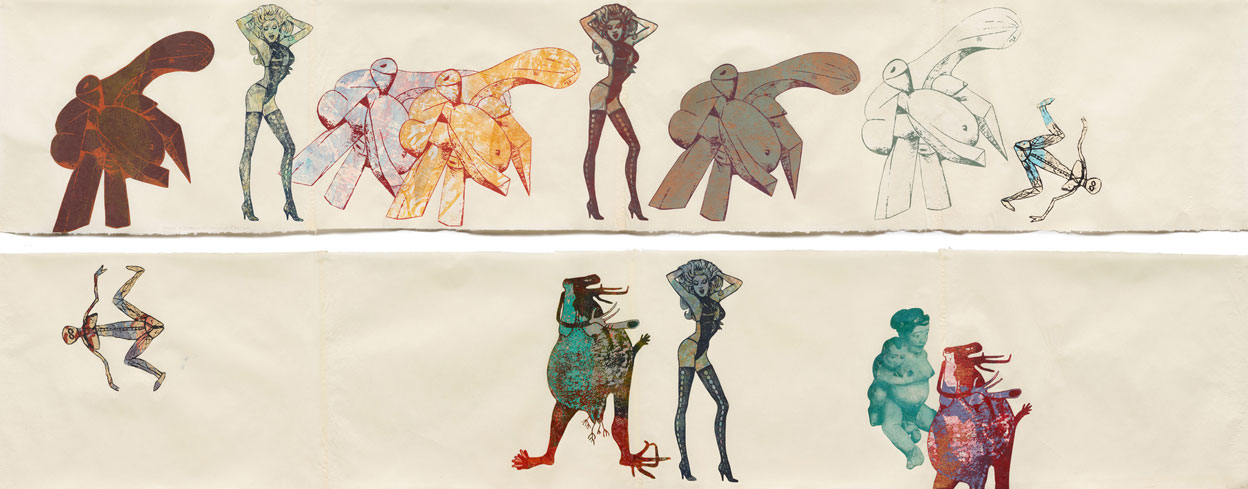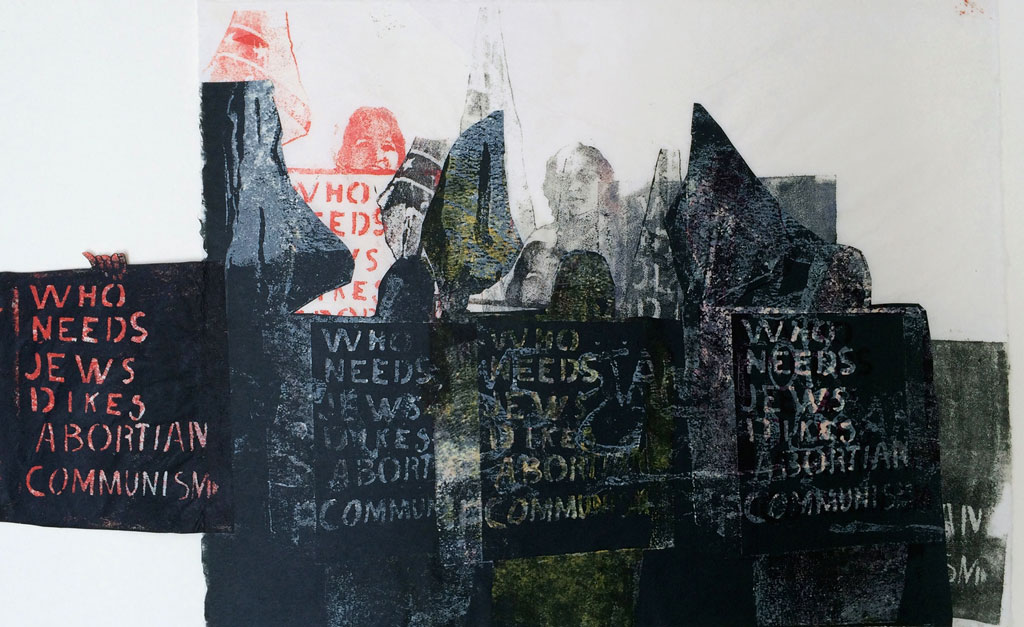ART-PRESENTATION: Nancy Spero
 Nancy Spero is one of the most significant figures in post-war American art. She engages in a complex way with existential aspects of what it means to be human. War and violence play a role in her work, as do injustices in gender relations. Female figures are her most important expressive means, with Spero taking up traditional image types and re-combining them.
Nancy Spero is one of the most significant figures in post-war American art. She engages in a complex way with existential aspects of what it means to be human. War and violence play a role in her work, as do injustices in gender relations. Female figures are her most important expressive means, with Spero taking up traditional image types and re-combining them.
By Dimitris Lempesis
Photo: Museum Folkwang Archive
Ten years after Nancy Spero’s death, Museum Folkwang is presenting a large-scale survey exhibition dedicated to this fascinating artist, with around 80 works, including works on paper, paintings, and installations. Nancy Spero was born in Cleveland, Ohio, in 24/8/1926 to a family with a Jewish background. A year later, her family moved to Chicago, where Spero remained until age 23. As a dealer of used print-presses, Spero’s father Henry Spero was, apparently, indifferent to her decision to become an artist: Thus without any real objection from her family, while at the same time without any real support, Spero enrolled at the School of Art Institute in Chicago. It was there that she met Leon Golub, her future husband, who had just returned from service in WWII and was now studying towards his masters at the Art Institute. For a year, Spero lived in Paris, continuing her training as an artist at the Élive Nationale Supponale des Beaux-Arts and at the Atelier of Andre Lhote, an early Cubist painter. When she returned to Chicago, at the age of 24, she married Golub. A few years later, having had two sons and feeling disappointed with the state of the art-world in America, at the time dominated by Abstract Expressionism, the couple decided to escape and to look for a new, more open environment in which to make work. Between 1957 and 1959 the couple lived in Italy and in Bloomington, Indiana. They then moved to Paris, where they stayed for five years and Spero gave birth to their third son. It was also in Paris at this moment that Spero created her first really mature works, the enigmatic “Black Painting” series. This highly creative phase included a series of paintings of lovers which although dark in palette were calm in tone. By contrast, works like “Les Anges, Merde, Fuck You” (1960) and “Nightmare Figures II” (1961) were more frenzied, with severed heads sticking out their tongues cleverly making reference to both the demons of patriarchy, and to the artist’s own crying babies. In 1964, the family returned to America and settled in New York. This was also a period of political crisis which affected Spero profoundly, she abandoned oil painting altogether and, from 1966 to 1970, focused on furious ink and gouache drawings on paper. It was around the same time that the artist became interested with what she called the “victimage” of women, focusing her practice on making visible a variety of local histories of female subjugation. What is more, she began looking for ways to become engaged with the world in a more active, immediate way – extending her feminism and activism beyond her practice as an artist. In 1972, Spero joined the founding committee of the Artist in Residence Gallery (A.I.R.), an initiative dedicated to exhibiting work by women. By the beginning of the 1980s Spero had already begun to assemble her well-known “cast” of female characters. Sourced from a variety of different images and cultures, these figures – including Lilith, Medusa, and the Irish fertility goddesss Sheela-Na-Gig – were invested by Spero with a different energy or role depending each time on the work. By 1988, her art had evolved from works on paper to installations, with the artist now printing her figures directly onto the walls of galleries and of public spaces. Suffering from rheumatoid arthritis, which progressively affected control of movement in her hands, Spero eventually decided to employ assistants, turning her practice into a collaborative process that would allow her to continue to create until the very end of her life. From the late 1980s until the early 2000s, Spero had installed installation pieces all across the world.
Info: Museum Folkwang, Museumsplatz 1, Essen, Duration: 6/6-25/8/19, Days & Hours: Tue-Wed & Sat-Sun 10:00-18:00, Thu-Fri 10:00-20:00, www.museum-folkwang.de





